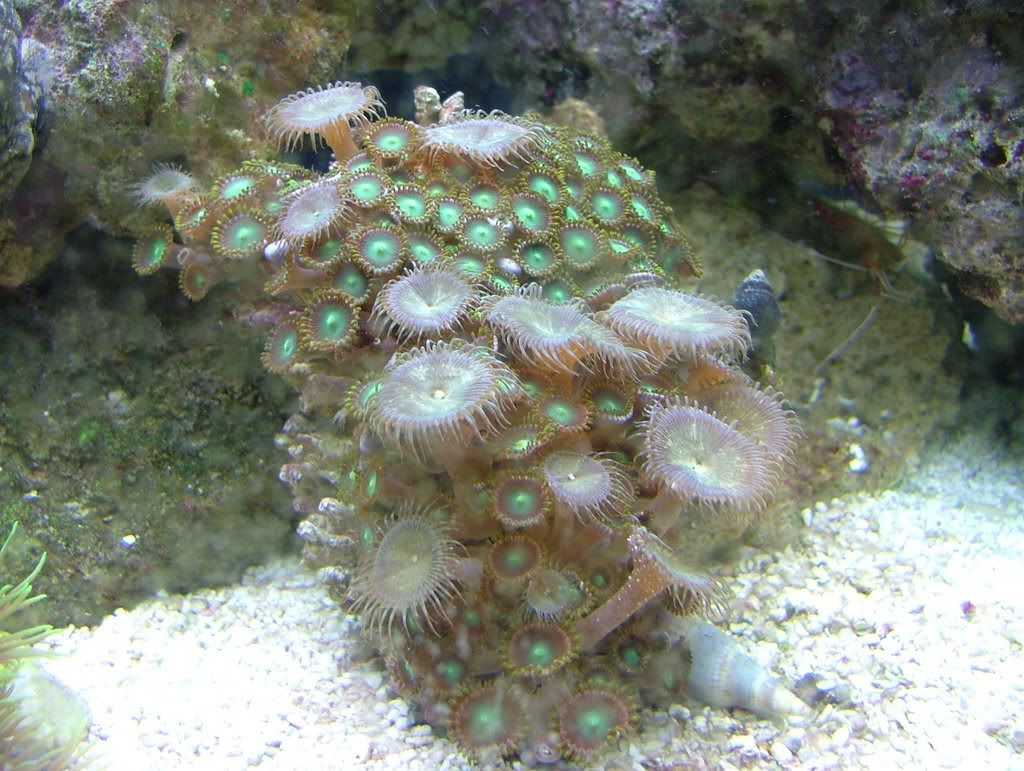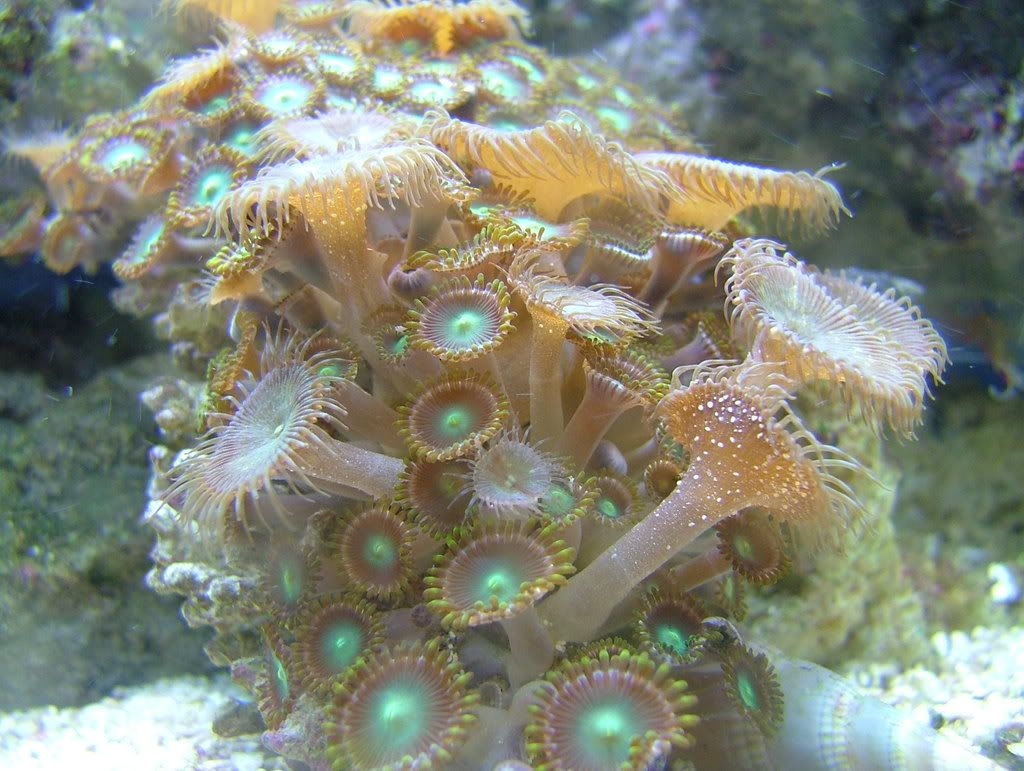jubbin2001
Member
Hi all
 . I recently got some new zoos for my tank, and I am having some difficuly pinning down what they just might be. The greens appear to be (to me, I am new to corals) a Radioactive Dragon Eye ( I have been scouring the forums
. I recently got some new zoos for my tank, and I am having some difficuly pinning down what they just might be. The greens appear to be (to me, I am new to corals) a Radioactive Dragon Eye ( I have been scouring the forums
 ). But the other one pictured I have been unable to find. It kind of seems like the closest one I found that looked similar was the Cammiethoas. They have been in the tank about a week, and the possible Cammiethoas seem to be growing pretty rapidly, and I am afraid they will over shadow the dragons (if I am actually correct and that is what they are
). But the other one pictured I have been unable to find. It kind of seems like the closest one I found that looked similar was the Cammiethoas. They have been in the tank about a week, and the possible Cammiethoas seem to be growing pretty rapidly, and I am afraid they will over shadow the dragons (if I am actually correct and that is what they are
 ). Also If you noticed the white specks on, what I call "the stock", what is that? Is it reproductive, parasitic, unknown
). Also If you noticed the white specks on, what I call "the stock", what is that? Is it reproductive, parasitic, unknown
 ? Any help from the gurus is much appreciated.
? Any help from the gurus is much appreciated.









